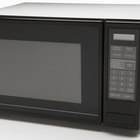
Creating the meal for a catered event takes planning and coordination. Getting the food to the venue in the same shape it left the kitchen needs to be part of the organization as well. Hot foods need to arrive that way and cold foods need to be kept at the proper temperature to be safe and edible. Gathering the right equipment and taking an extra couple of steps will ensure the meal's success.
Hot Boxes and Cooler
Purchasing well-insulated plastic or metal containers for transporting food is essential for catering. Some are specially designed to accommodate hotel and sheet pans by having slots built into the cavity. Think of these boxes like thermoses; they will keep your food hot while you transport it from your kitchen to the facility. Remember that these boxes are not designed to heat food, only keep them warm. Making sure your food is above the safe holding temperature of 140 degrees F when you place it in the hot boxes will help ensure a safe product when you arrive.
Store your cold foods the same way to ensure that perishables remain at safe food handling temperature of under 41 degrees F. Commercial restaurant supply stores sell plastic insulated pads that you can place on top of your cold food pans for this purpose.
Containing Hot Foods
Wrapping your food well will make sure it arrives at the venue ready to serve and not wind up all over the transport vehicle. Just using a strong foil wrap won't keep soup from sloshing over the rim of the holding pot and onto the truck bed. Get a good quality plastic wrap and seal the pan or tureen before you place the foil on top. Some caterers double the job by wrapping the entire pan or pot in foil. Not only will this provide an extra layer of protection against spills, it can double as insulation if a hot box isn't available.
Wrapping Platters
Cater wrapping is an industry technique that keeps food sealed on the tray until it's time to serve. For cold platters that have been painstakingly laid out you will want a little extra insurance that you won't start losing canapes during the travel process. To do this, pull a long piece of plastic wrap out of the box and place the tray on top of it. Bring the wrap up and around to completely seal the tray. If there are still gaps, turn the tray and repeat the process.
Accidents happen and trays get dropped, but if your tray is well wrapped you won't have to waste food that's been dropped on the floor. In the best case scenario you'll be able to salvage that painstakingly-laid-out party platter.
Related Articles

How Long to Cool a Quiche

How to Cook With Saran Wrap
How to Keep Deli Meats & Fruit Cold at ...
How to Keep Buffet Food Cool

Containers That Keep Food Hot

How Long Can Chinese Food Sit Out ...

How to Keep Ham Slices Warm for ...

The Difference Between a Chafing Dish & ...

How Long Does Foil Keep Food Warm?
Can You Bring Food into Disneyland?

Can You Reheat Pheasant?
How to Heat Up Hot Dog Buns for a Large ...
How to Keep Waffles Hot at a Brunch

How Long Is Leftover Spaghetti Good to ...

How Long Can I Keep Food Safe in a ...
Can You Cook Chicken Wings the Day ...

Can You Cook Something Frozen in the ...

How to Boil Ziploc Bags

Number of Times Food Can Be Reheated
Can You Bring Snacks into Disney World?
Writer Bio
Nikki Jardin began freelance writing in 2009 and focuses on food and travel articles. She has been a professional cook and caterer for more than 20 years. She holds a degree in environmental science from Humboldt State University.